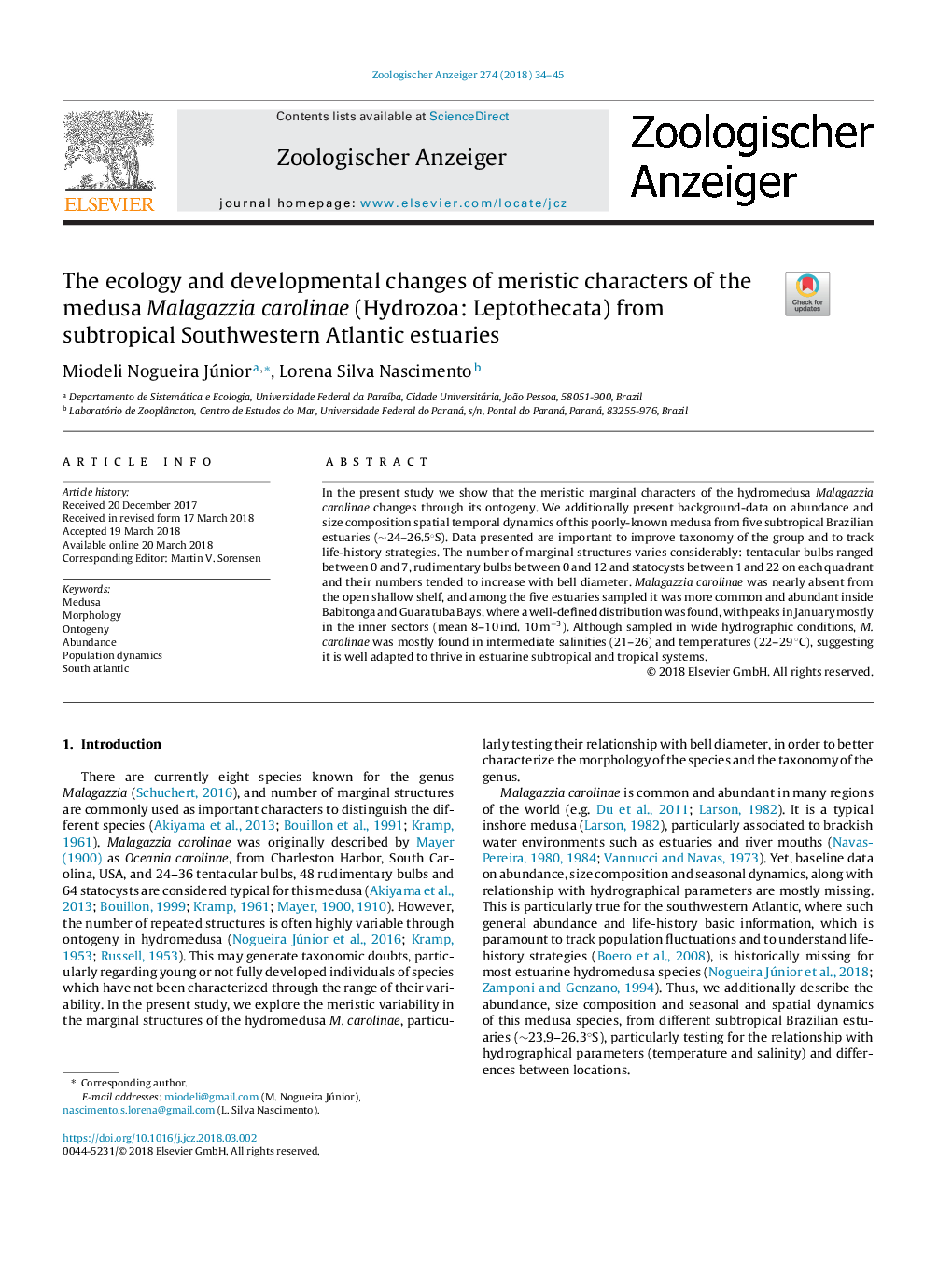| Article ID | Journal | Published Year | Pages | File Type |
|---|---|---|---|---|
| 8626723 | Zoologischer Anzeiger - A Journal of Comparative Zoology | 2018 | 12 Pages |
Abstract
In the present study we show that the meristic marginal characters of the hydromedusa Malagazzia carolinae changes through its ontogeny. We additionally present background-data on abundance and size composition spatial temporal dynamics of this poorly-known medusa from five subtropical Brazilian estuaries (â¼24-26.5°S). Data presented are important to improve taxonomy of the group and to track life-history strategies. The number of marginal structures varies considerably: tentacular bulbs ranged between 0 and 7, rudimentary bulbs between 0 and 12 and statocysts between 1 and 22 on each quadrant and their numbers tended to increase with bell diameter. Malagazzia carolinae was nearly absent from the open shallow shelf, and among the five estuaries sampled it was more common and abundant inside Babitonga and Guaratuba Bays, where a well-defined distribution was found, with peaks in January mostly in the inner sectors (mean 8-10 ind. 10 mâ3). Although sampled in wide hydrographic conditions, M. carolinae was mostly found in intermediate salinities (21-26) and temperatures (22-29 °C), suggesting it is well adapted to thrive in estuarine subtropical and tropical systems.
Related Topics
Life Sciences
Agricultural and Biological Sciences
Animal Science and Zoology
Authors
Miodeli Nogueira Júnior, Lorena Silva Nascimento,
